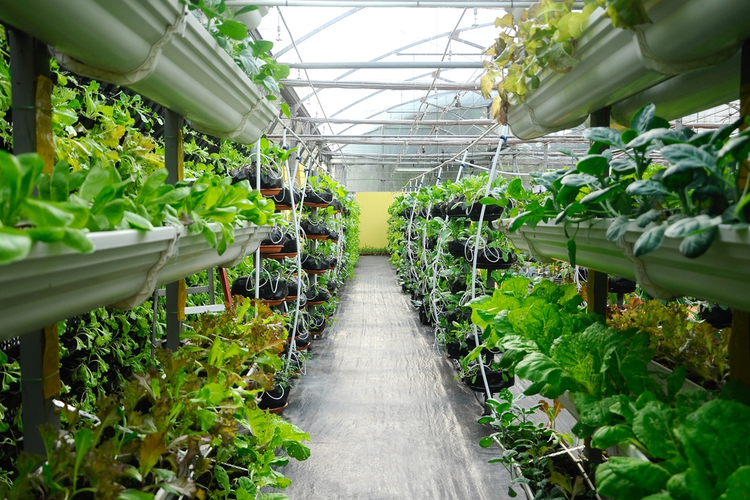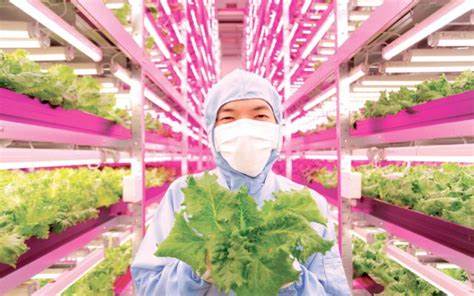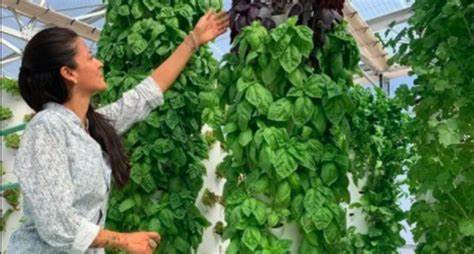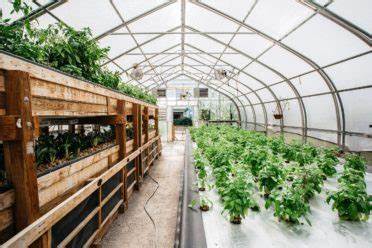
Vertical Farming: Revolutionizing Agriculture and Reducing Food
Waste
Introduction
Vertical farming is an innovative approach to agriculture that involves growing crops in vertically stacked layers, using indoor farming techniques such as hydroponics and aeroponics. This concept has gained significant attention due to its potential in reducing food waste, a pressing issue in today’s world. By maximizing land and resource use, vertical farming offers a sustainable solution to ensure food security while minimizing environmental impact.
Historical Background
The origins of vertical farming can be traced back to the Hanging Gardens of Babylon, one of the Seven Wonders of the Ancient World. However, it is in recent years that the concept has evolved and gained prominence. As concerns about food waste and sustainability have increased, vertical farming has emerged as a viable solution to address these issues.
Key Concepts and Definitions
Vertical farming encompasses various key components, including hydroponics, which involves growing plants without soil, and aeroponics, a technique that uses a mist or fog to deliver nutrients to the plants. These innovative methods optimize resource efficiency and allow for year-round crop production.
Food waste, on the other hand, refers to the discard of edible items at any stage of the food supply chain. It can occur before consumption as pre-consumer waste or after consumption as post-consumer waste. Understanding these definitions is crucial to fully comprehend the impact of vertical farming on reducing food waste.

Main Discussion Points
Benefits of Vertical Farming in Reducing Food Waste
Increased efficiency in land and resource use: Vertical farming maximizes the use of space by growing crops vertically, resulting in higher yields per square foot. Additionally, water and nutrient consumption are optimized through techniques like recirculating irrigation systems, reducing waste and conserving resources.
Reduction in transportation and distribution losses: By cultivating crops closer to urban areas, vertical farms minimize transportation distances, reducing the likelihood of spoilage and waste during transit. This localized approach also ensures fresher produce for consumers.
Ability to grow crops year-round and in urban areas: Vertical farms are not limited by seasonal changes or geographical constraints. By creating controlled environments, crops can be grown throughout the year, irrespective of external factors. This flexibility helps to meet the demand for fresh produce in urban areas without relying on long-distance transportation.
Techniques and Innovations in Vertical Farming for Waste Reduction
Controlled environment agriculture systems: Vertical farms utilize advanced technologies to create optimal growing conditions, including temperature, humidity, and lighting. These controlled environments minimize the risk of pests and diseases, resulting in healthier crops and reduced waste.
Automation and data-driven optimization: Vertical farming incorporates automation and data analytics to monitor and optimize various aspects of the farming process. This includes precise nutrient delivery, pest detection, and harvesting, leading to improved efficiency and waste reduction.

Integration of renewable energy sources: Many vertical farms are embracing renewable energy sources such as solar panels and wind turbines. By reducing reliance on fossil fuels, these farms minimize their environmental impact and contribute to a cleaner, more sustainable future.
Case Studies or Examples
Example: AeroFarms – AeroFarms is a leading vertical farming company that leverages advanced technology to reduce waste. Their indoor farms utilize aeroponics and LED lighting systems, resulting in significantly higher yields compared to traditional farming methods. By growing crops closer to the point of consumption, AeroFarms reduces transportation and distribution losses, thereby minimizing food waste.
Example: Growing Underground – Located in London, Growing Underground is an innovative underground farm that addresses food waste and sustainability. By repurposing disused tunnels, they grow a variety of crops year-round, using hydroponics and LED lighting. This urban farming initiative ensures fresh produce for local markets, reducing the need for long-distance transportation.
Example: Vertical Harvest – Vertical Harvest is a multi-story greenhouse in Wyoming that promotes local food production and waste reduction. By utilizing vertical farming techniques, they grow a diverse range of crops, including microgreens and herbs. Their proximity to the community minimizes transportation emissions and ensures a sustainable source of fresh produce.
Current Trends or Developments
Advancements in vertical farming technologies continue to drive its growth and impact. Innovations such as vertical stacking systems, sensor technology, and artificial intelligence are revolutionizing the industry, leading to improved efficiency and waste reduction. Research findings also highlight the positive impact of vertical farming on reducing food waste, providing further impetus for its adoption.
Challenges or Controversies
While vertical farming offers numerous benefits, concerns regarding energy consumption and environmental impact have been raised. The energy requirements for indoor farming systems, particularly artificial lighting, can be substantial. However, advancements in energy-efficient technologies, coupled with the integration of renewable energy sources, are mitigating these challenges. Additionally, debates surrounding the scalability and economic viability of vertical farming are ongoing, with some questioning the profitability of such operations on a large scale.

Future Outlook
The potential for growth and adoption of vertical farming for waste reduction is immense. As technology continues to advance and consumer demand for sustainable, locally-grown food increases, vertical farming is poised to play a significant role in the future of agriculture. Collaborations between vertical farming and other sustainable food practices, such as composting and regenerative farming, can further enhance waste reduction efforts and create a more resilient and sustainable food system.
Conclusion
Vertical farming offers a sustainable solution to reduce food waste and ensure food security. The benefits of maximizing land and resource use, minimizing transportation and distribution losses, and enabling year-round crop production are undeniable. With ongoing advancements and research, vertical farming is poised to revolutionize agriculture and contribute to a more sustainable future.
References
Despommier, D. (2010). The vertical farm: feeding the world in the 21st century. Macmillan.
Food and Agriculture Organization of the United Nations. (2019). Food loss and waste facts. Retrieved from http://www.fao.org/food-loss-and-food-waste/en/
Giovannoni, J. J. (2017). Genetic engineering in agriculture: the future of food. Current Opinion in Biotechnology, 44, 115-119.
Li, X., & Kubota, C. (2009). Effects of supplemental light quality on growth and phytochemicals of baby leaf lettuce. Environmental and Experimental Botany, 67(1), 59-64.




